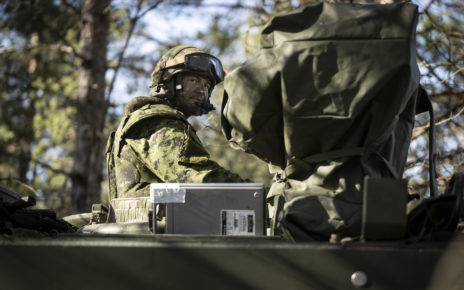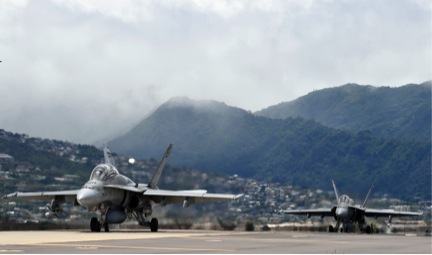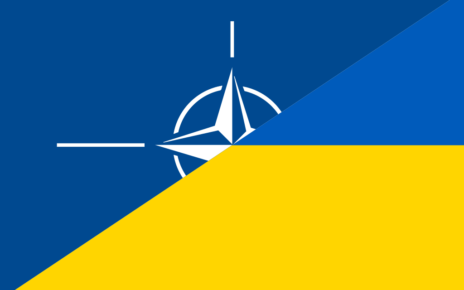In 2024, several major developments unfolded in the Russian war on Ukraine, including Ukraine’s offensive in Russia’s Kursk Oblast, which began in August. The Ukrainian Armed Forces intensified drone attacks on Russia’s military and energy infrastructure, targeting more than 30 oil refineries. Additionally, Ukraine has rapidly transformed from receiving military aid to becoming a successful producer of advanced unmanned aerial systems, artillery, and missiles.
Canada ranks among the top 10 donors of military aid to Ukraine, having committed $4.5 billion since early 2022. Key military support provided by Canada to Ukraine in 2024 includes the provision of multirole boats, armoured vehicles, the purchase of large-caliber rounds and small arms ammunition, as well as funding for several joint projects with partner countries.
This year, Canada joined several “military capability coalitions” established by Ukraine’s allies within the Ukraine Defense Contact Group (also known as the Ramstein Group). These coalitions aim to coordinate donations and support based on specific battlefield priorities. Notably, Canada is a member of the Air Force, Drone, Armour, and IT capability coalitions.
Canada responded swiftly to Ukraine’s urgent needs, contributing to several timely projects led by allied states. When the Czech Republic called for funding additional NATO-caliber ammunition for Ukraine, Canada promptly allocated $53 million to support this initiative within a few months.
Another pressing need for Ukraine has been air defence systems to protect its civilian population from frequent massive attacks by Russian missiles and drones. In May 2024, Canada joined Germany’s Immediate Action on Air Defence initiative and pledged a $76 million contribution to help protect Ukraine’s skies.
The long-awaited delivery of F-16 fighter jets to Ukraine, which began in the summer of 2024, marked another important milestone on the battlefield. As part of its involvement in the F-16 Training Coalition for the Armed Forces of Ukraine, Canada contributed civilian instructors, planes, and support staff contracted from Montreal-based Top Aces Inc. to assist Denmark and France in their training efforts. Additionally, in February 2024, the Canadian government allocated $60 million to the Air Force Capability Coalition to help establish a sustainable F-16 fighter aircraft capability in Ukraine.
Ukraine’s incursion into Russia’s Kursk Oblast sparked extensive discussions among Ukraine’s allies regarding the use of donated weaponry on Russian territory. Canada has been a vocal supporter of using Western military equipment within Russia for purposes defined by Ukraine. One week after the incursion began, Canada confirmed that Ukraine was free to use Canadian-donated tanks and armoured vehicles inside Russia.
Modern warfare increasingly relies on unmanned aerial vehicles (UAVs). In recent years, Ukraine has emerged as a leading actor in this domain, developing a diversified portfolio of drones. In 2024, Canada announced the donation of over 900 SkyRanger R70 multi-mission Unmanned Aerial Systems and allocated $3 million to support the production of drones by Ukraine’s domestic defence industry.
However, not everything went smoothly in delivering Canadian military support to Ukraine. Reports indicate that it took Canada four months to transfer funds after deciding to purchase urgently needed National Advanced Surface-to-Air Missile Systems (NASAMS) for Ukraine. Additionally, the delivery of the first system to Ukraine took nearly two years.
Reports in early 2024 revealed that electronic components produced by Canadian companies were found in weapons and other equipment used by Russia in its military assault on Ukraine. Later in the year, Canada expanded its sanctions list to target organizations within Russia’s military-industrial sector that supply critical technologies and electrical components to support its war efforts. While Russian companies continue to find creative ways to circumvent sanctions, it remains crucial to monitor the work of agencies and media documenting the use of foreign components in Russian, North Korean, and Iranian weaponry and to adjust sanctions accordingly. Ukrainian officials regularly raise this issue in their meetings with Canadian counterparts.
In the new political landscape following Mr. Trump’s re-election as president of the United States, Ukraine may face challenges securing the resources needed to support its armed forces and maintain its position on the battlefield. In 2025, Canada and other allies will need to reassess their priorities and explore more efficient ways of cooperating with and supporting Ukraine.
Additionally, Canada may be interested in exploring the potential for joint military production projects with Ukraine. These could include direct financing of Ukrainian military production, following “the Danish model,” which would enable faster manufacturing and delivery of essential weaponry for Ukraine’s defence forces. Other allies have proposed alternative cooperation formats, such as purchasing weaponry from Ukraine for their own armed forces, as seen with Estonia.
It would be particularly beneficial for Canada and its national security and defence sector to explore closer cooperation with Ukrainian military producers, especially in the domain of unmanned systems. By learning from Ukraine’s direct battlefield experiences, Canada could apply these technologies to counter emerging threats in other contexts.
Photo: Leopard tank firing on the training ground at the Leopard Training Center in Świętoszów, Poland. Canadian, Norwegian and Polish military instructors have been training the Ukrainians both in virtual simulators and in live-fire and manoeuvre exercises. Courtesy of NATO.
Disclaimer: Any views or opinions expressed in articles are solely those of the authors and do not necessarily represent the views of the NATO Association of Canada.




